How to Make a Subway Map with John Tauranac
Hear from an author and map designer who has been creating maps of the NYC subway, officially and unofficially, for over forty years!


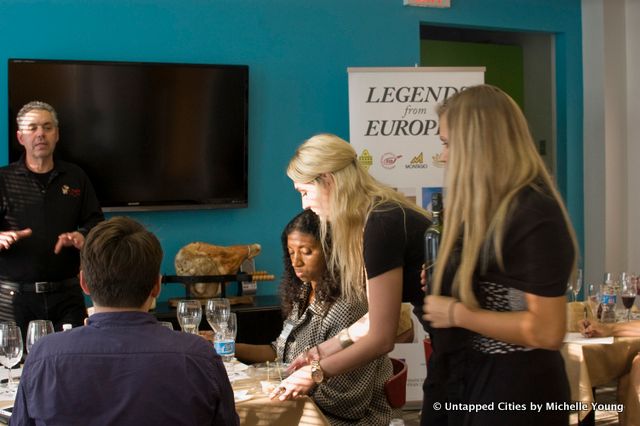
On the evening of Fashion’s Night Out, I went to satisfy my culinary interests and my long-standing relationship with Europe at a “Legends from Europe” tasting. Legends from Europe is a three-year campaign financed the the European Union and Italy celebrate the quality, tradition and taste of five world—renowned Protected Designation Origin (PDO) products. This particular tasting was led by Lou Di Palo, the fourth generation proprietor of Di Palo, a century-old New York institution in Little Italy, a shop Untapped previously covered in our Sunday in Chinatown column. We imbibed, sampled and discussed in the test kitchen of Lewis & Neale in the Meatpacking District.
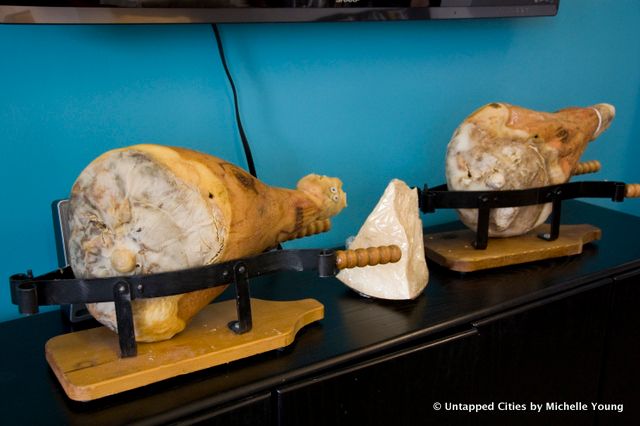
Over four courses of Italian cheese and prosciutto, paired with wines selected by Di Palo, we were given the history of these foods and what made them unique. Each product has deep ties to the land, made from centuries in a particular place, flavored by the climate, ecosystems and land on which the animals graze. All the products are natural, free of additives and preservatives, made using traditions passed down the generations, and ensured for quality by producers’ associations.
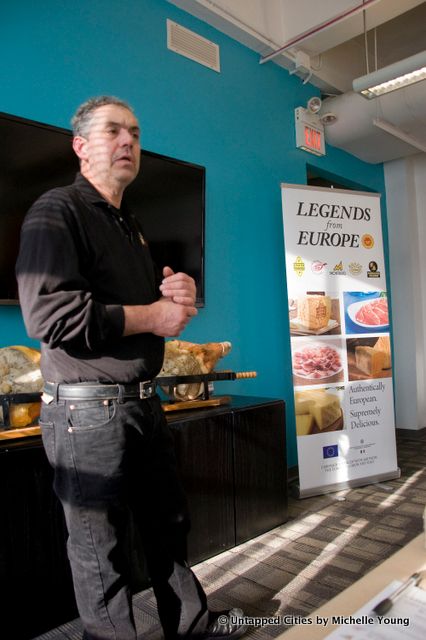
Beyond the food, the real highlight was Di Palo himself, who spoke rousingly of Little Italy, where the spirit of immigration, in particular, the “art of enjoying food,” remains despite the reduction in the neighborhood’s size over the last century. He highlighted the difference between eating to live, which reflected the struggles of the first colonists in the new world, to the Italian heritage of “living to eat.”
Most interesting to the Untapped New York attendees there, which included a Parisian, was the cultural gap that was revealed through the culinary presentation, underlying the importance of the Legends from Europe campaign. One attendee asked how she could determine the particular cheese maker, much like how Americans shop by brand. Di Palo explained that in Italy, the focus is on the group–the consortium–versus the individual producer. Another guest asked what typical mistakes Americans make in handling cheese. “You have to understand that cheese is living,” Di Palo said, “As soon as the cheese is cut, it’s oxidizing.”
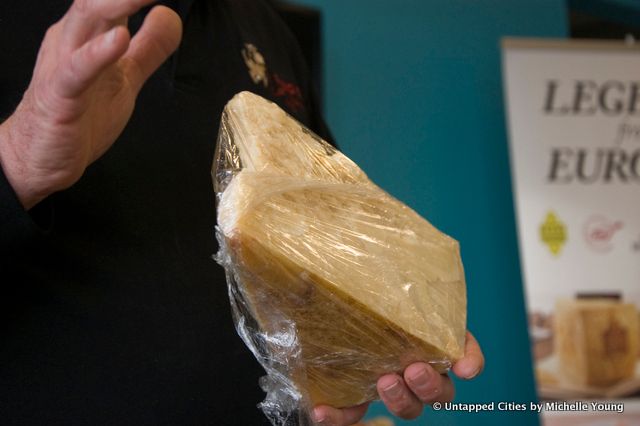
In terms of food, there is “no substitute for environment,” Di Palo contended and he reinforced this through combining foods only from the same region in each course. When traveling, order food particular to the region, he recommended: “Don’t ask for lambrusco when you’re in Florence, don’t ask for chianti in Sicily.”
In the first course, we tasted the Grana Padano and the Prosecco Cartizze from the area above the Po River, the breadbasket of Italy. There are less than 200 producers of this cheese, who follow a regimented technique using only skimmed milk. Di Palo showed us the difference between Grana Padano aged 16 months from 24 months.
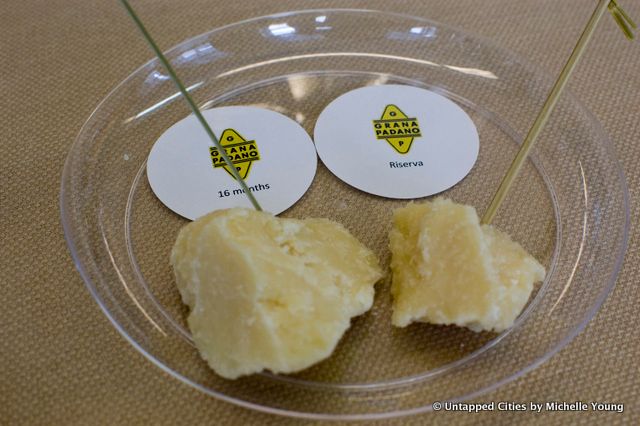
In the second course, the Prosciutto di San Daniele and the Montasio Mezzano cheese were paired with a Ribolla Giala 2010 wine. The nutty, slightly salty Prosciutto was “god’s gift” to man, said Di Palo and urged us to put our noses to the ham and “smell the Adriatic.” Separate legs of prosciutto are cut for the United States market, where curing with hands does not pass quality muster.
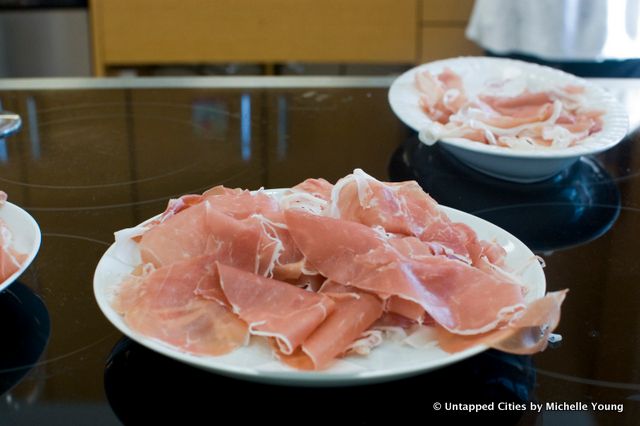
The third course came from Parma, the gastronomical capital of the world. There are 470 producers of parmigiano reggiano but the milk comes from one small area. Di Palo described the altitude, rolling hills and country breezes that make the product unique. We tasted parmigiano reggiano aged 28 months and 36 months, and Di Palo spoke at length about what he believes are the “seasons” of parmigiano–which he famously once recounted to The New York Times. Spring and fall parmigiano have differences in flavor and color. Prosciutto de Parma aged 20 months and a Lambrusco Secco accompanied this course.
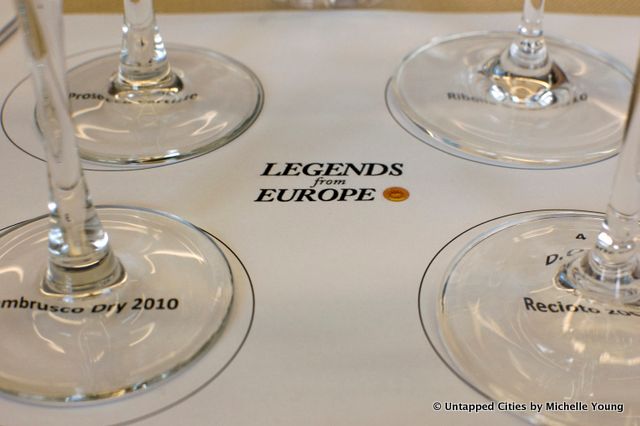
The final course was presented by the consortium of Montasio and Di Palo provided us a vision of free grazing mountain cows surrounded by snow white mountains, once ancient reefs. The course featured a Montasio Stravecchio cheese, aged for more than one year, and a Recioto 2008 wine. The sweet tasting Recioto was a favorite of Hemingway, when it was an affordable drink to which he would often drink himself into a stupor.
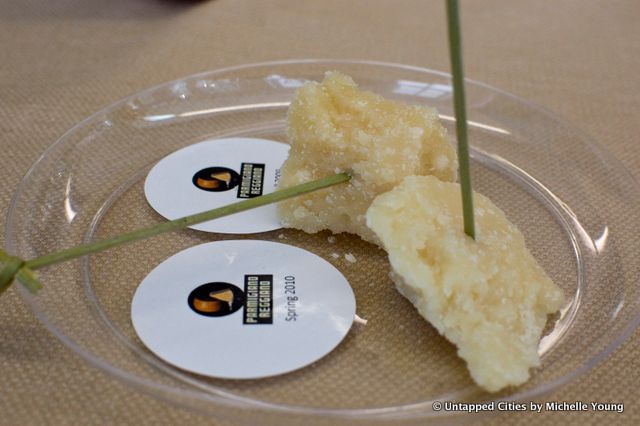
The Di Palo family store in Little Italy began as a latteria, selling only cheese, milk and butter but has expanded to include hundreds of Italian specialties. Di Palo personally travels to Italy to source the products and works directly with the artisans. “One of the things we try to do,” he says, “is to share the knowledge. Education is very important.” In this presentation, he wanted to highlight “how similar, yet how diverse” the products are and how to appreciate them.
Check out Di Palo on 200 Grand Street in Little Italy [Map] and find out more about the Legends from Europe campaign on the official website.
Get in touch with the author @untappedmich.
Subscribe to our newsletter